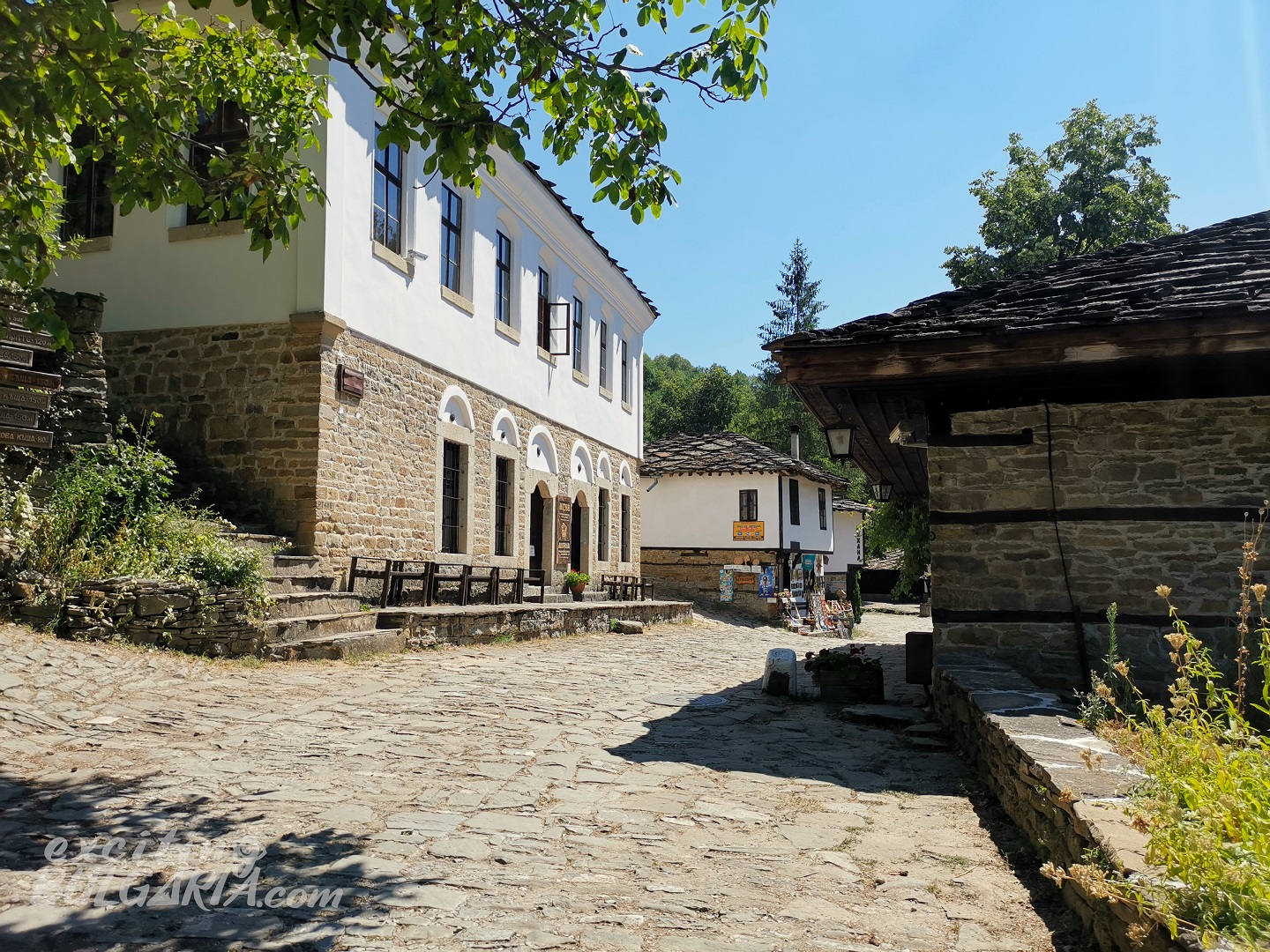Surrounded by the green slopes of the Balkan Mountains, the beautiful village of Bozhentsi preserved the spirit of the past. It is one of the most impressive architectural reserves in Bulgaria and a popular tourist destination.

Stepping into this fabulous place feels like time travel – its well-preserved Bulgarian National Revival architecture and romantic, cobblestone streets create a charming atmosphere. Due to the fresh mountain air and the relaxing, peaceful environment, Bozhentsi has become one of the favorite places for recreation of many people. It is a real refuge from the noise of today’s accelerated lifestyle. Despite being a well-known tourist spot, it doesn’t really get too crowded.
History
According to the legend, the settlement was founded in 1393 by a noblewoman (bolyarka) called Bozhana. After the death of her husband during the capture of the capital Tarnovo by the Ottomans, she chose to settle in the area with her children and became the namesake of the village.

In fact, Bozhentsi was founded in the 16th century, following an Ottoman Turk incursion in Veliko Tarnovo, the former capital of the Second Bulgarian Empire. Many residents then fled to settle in the deeper and more inaccessible parts of the Balkans. Bozhentsi was inhabited by wealthy Bulgarians who were primarily involved in handicrafts and trade. They distributed their products in different parts of the Ottoman Empire and beyond. The first documented record of Bozhentsi can be found in the Turkish tax register from 1750.
In the second half of the 18th century, Bozhentsi experienced an economic boom, mainly from trade. The production mostly consisted of leather, wool, beeswax and honey. Sheep breeding, beekeeping, sericulture (silk farming) and various crafts like blacksmithing or furriery were the leading occupations.

The village became an administrative, economic, cultural, and spiritual center towards the end of the 19th century with 110 houses and around 500 inhabitants. The citizens of Bozhentsi played an active part in the Bulgarian nation’s battle for independence from the Ottoman rule. After the Liberation, the factory industry replaced local handicrafts. Turkish marketplaces were closed to Bulgarian traders, and the settlement started to decline gradually. As of 2020, Bozhentsi had less than 50 permanent residents.
Architecture
The repair of some of the buildings and the complete restoration of the village began in 1962. On January 28, 1964, Bozhentsi was declared an architectural reserve and is now part of UNESCO’s cultural monuments. The village is also listed among the 100 national tourist attractions of the Bulgarian Tourist Union. There are around 100 remaining homes, ranging in age from 100 to 250 years – all preserved in their authentic form. Many of them since have been turned into souvenir shops, restaurants or family hotels. Pavements on all the streets are cobbled, and there is a ban on the construction of any building in the village that doesn’t fit with its architectural style.

Most of the houses in Bozhentsi are two-storey. The first floor was often used as a shop or cattle shed, while the owners occupied the second floor. The verandas, stone-plate roofs, corner fireplaces and wood carvings on the ceilings make these houses truly unique.
The church of Prophet Elijah, a three-nave pseudo-basilica, is an outstanding example of Bulgarian National Revival architecture. It was built in 1840, entirely of stone masonry with 80 cm thick walls. The icons inside are the work of several artists, painted at different times. The 17 m high bell tower was erected in 1895.
Museums
Some of the houses in Bozhentsi operate as museums now. Constructed by master Gencho Kanev in 1870, the old primary school is located at the entrance of this village, opposite the information center. It is currently used as an exhibition hall for temporary expositions.

Baba Raina House is one of the oldest buildings preserved in the village, built in the second half of the 18th century. The house museum hosts an ethnographic exposition from the 18th and 19th centuries.
Once owned by one of the wealthiest wool and leather merchants in Bozhentsi, Doncho Popov House has another ethnographic collection. The three-storey building was built in the middle of the 19th century, now it exhibits the way of life of local people from that period.
There is a workshop for beeswax purification as well, called Mengema. It showcases an authentic press machine from the beginning of the 19th century.
All the museums can be visited by purchasing a single 6 BGN ticket. Group visits start every hour from 9 am to 4 pm.
Location
Bozhentsi (officially Bozhentsite, sometimes written as Bojentsi; BG: Боженци) is nestled in the northern slopes of the Balkan Mountains 540 m above sea level, 20 km from Gabrovo and 45 km from Veliko Tarnovo. It is a true ‘dead-end village’ as it is only accessible via one public road, No. 5224. However, there is a hiking trail connecting Bozhentsi with the gorgeous town of Tryavna, another architectural landmark in the Balkan Mountains. Road 5224 ends in a paid parking lot at the entrance of Bozhentsi. Entering the village by car is not allowed for visitors.